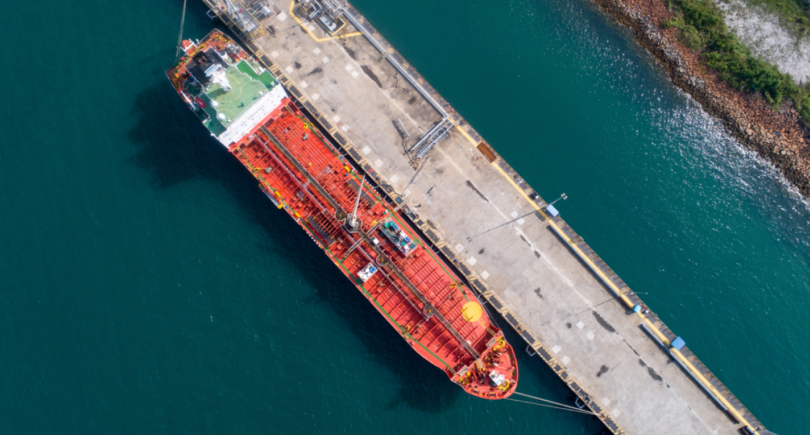
Opinions Infrastructure cargo transportation 711 13 March 2025
The solution to the problem lies in the adoption of a specialized law and the division of UZ into separate business units
Ukrainian Railways (UZ) is trying to position itself as a customer-oriented carrier that, despite the war, is updating its fixed assets and introducing digital innovations. But all of this applies only to the passenger segment of UZ, which generates about UAH 20 billion in losses for the company per year. At the same time, freight transportation, which is the only source of positive margin for UZ, is still carried out according to outdated rules, where the monopoly does not take into account the needs of freight users and does not consider it expedient to improve its service mechanics for their sake. Digital innovations still bypass UZ’s freight business: data processing on rolling stock movements and infrastructure utilization, as well as the generation of commands to executors, are done manually.
Shift the priority to cargo owners
Imagine that Europe’s largest railroad plans freight transportation for today. Dispatchers make decisions based on instructions received in the morning via the selector, when they are told the numbers of trains and wagons to be processed and dispatched. As a result, there is no long-term planning, and marshalling yards operate inefficiently, leading to double or triple processing of cars. All of this entails additional costs, including human resources and traction.
Personnel costs, which already account for 50% of the cost of rail transportation and are growing faster than labor productivity, indicate insufficient automation. The preservation of outdated methods of management and information processing in freight transportation is slowing down even those high-tech manufacturers that have already integrated automated systems into their business processes. First, they are forced to either pay freight forwarders or maintain staff for “analog” interaction with UZ. Secondly, they have to put up with cargo transportation speeds of 50-70 km per day, while passenger trains travel 600-700 km! After all, unlike passenger trains, which run according to a schedule, freight trains move without any schedule and wait until the command for further passage is generated at the next meeting and passed on to the executors. In general, this leads to the fact that 80% of the time, private logistics assets related to railways do not work, do not handle cargo, and are idle while waiting for decisions and commands from within UZ.
From the point of view of any sane business, it is logical to focus on serving the customer segment that generates its revenue. But instead of investing resources in the modernization of freight logistics, which feeds the entire rail transport system, UZ directs resources and innovations to the passenger direction, because it provides a wow effect and media resonance. Instead, freight owners are asked to tolerate the shortcomings of the current system and accept a 37% increase in tariffs because UZ lacks the funds to maintain its outdated and wasteful business model.
In fact, UZ behaves not like a business, but like Robin Hood on the rails: it takes money from “rich” cargo owners (whom it reassures: “2-4 dollars per ton is a pittance for you!”) and gives it to “poor” passengers in the form of affordable tickets, online services, Wi-Fi on routes, and new cars.
For your information: Slovakia spent exactly the same amount on a scheduler, a program that optimizes transportation, reduces unnecessary car movements, and reduces operating costs, as Ukrainian Railways spent on one passenger car. Telemetry for freight cars, artificial intelligence, and technologies for automated transportation planning and infrastructure capacity allocation are not futurism, but the realities of the world’s railways, which accelerate the movement of goods and the turnover of funds. Instead, Ukrainian exports are becoming less competitive, as Ukrainian producers have to overpay for market access due to the backwardness of UZ.
The need for reform
The current structure of UZ is like an outdated clockwork – it is incapable of self-reform due to internal inertia, lack of competition and incentives to improve. Appointment of a new manager at UZ by the shareholder government is functionally like installing a new battery in this mechanism: even an innovative manager still has to operate within the framework of an outdated mechanism. That is why the logical (and only possible) solution to solve the systemic problems of the railroad is to adopt the Law “On Railway Transport”, which will launch the structural reform of UZ in accordance with European directives.
The reform envisages dividing UZ into separate functional business units: infrastructure, freight, and passenger. Today, UZ simultaneously acts as a regulator, controller and policy implementer in rail transportation. The split will allow for a clear delineation of responsibilities: the infrastructure company will maintain tracks and stations, the freight company will earn money from cargo transportation, and the passenger company will fulfill its social mission.
Even if all functional areas are state-owned, separate management of passenger and freight transportation will allow setting clear separate quality criteria, separate KPIs for each segment, and eliminate organizational colonialism, when shortcomings in freight service (which cause manufacturers to overrun rail logistics costs) become a source of funding for passenger service improvements. Freight owners want UZ to count money, to care not only about some passengers at their expense, but also about them, and the separation of UZ functions will create conditions for this.
Thanks to the creation of a transparent methodology for calculating costs (transportation, maintenance of railway infrastructure and its sections involved in each individual route, individual operations in motion and other distributed railway services), businesses will receive a transparent model where they can see the real cost of their transportation. In addition, the commercialization of relations between infrastructure and carriers, even within state ownership, will force an increase in operational efficiency and abandonment of inefficient practices. An audit of the railroad’s expenses and assets will show which stations do not generate profit but only meet social transportation needs, so their maintenance should become the responsibility of local communities rather than being passed on to shippers, such as farmers or steelmakers.
Iron & steel sector as a driver of change
The steel industry, as one of the largest rail shippers, has a unique opportunity to influence the start of freight reforms right now, without waiting for the adoption of the Law on Rail Transport. As the government and UZ insist on raising freight tariffs by 37%, steelmakers can put forward consolidated counter-proposals, which would be met by agreeing to the tariff increase. For example, they could develop a methodology and automated information system for determining transportation costs based on the actual costs of the infrastructure, fuel, repairs, etc. at their own expense.
This will allow forecasting costs, avoiding manipulations, and will cost 10 times less than the annual overpayment of producers due to the tariff increase. With their influence in the Cabinet of Ministers, steelmakers can move the reform forward because UZ will not be able to ignore a ready-made solution.
By the way, this ready-made solution will put an end to the disputes over freight classes and stop accusations of underpayments to the mining and metals industry. This will not only reduce the burden on the economy but also increase the competitiveness of Ukrainian products in international markets. Ukraine’s economic development depends on the efficiency of the railways. Therefore, if we want UZ to operate according to market laws, reforms are needed today.






